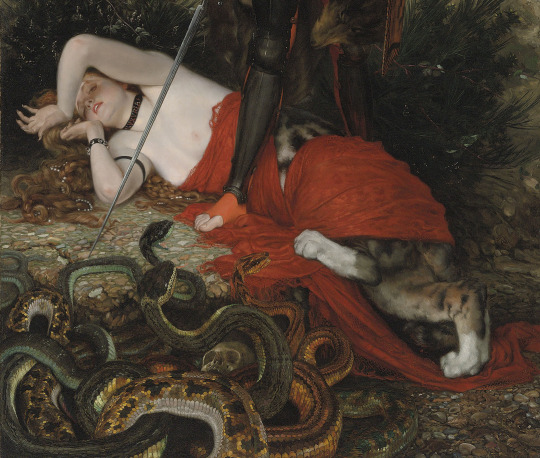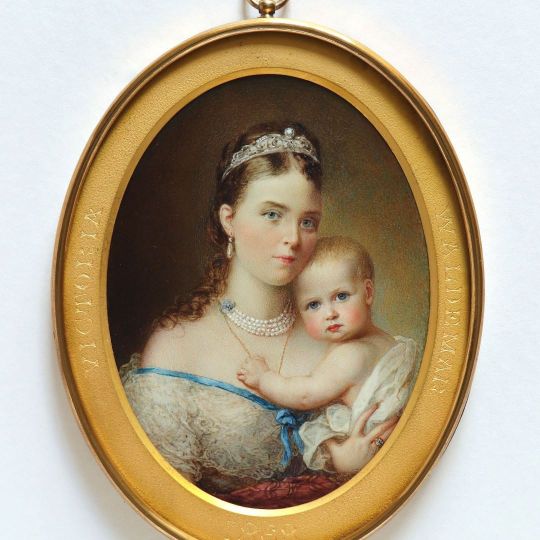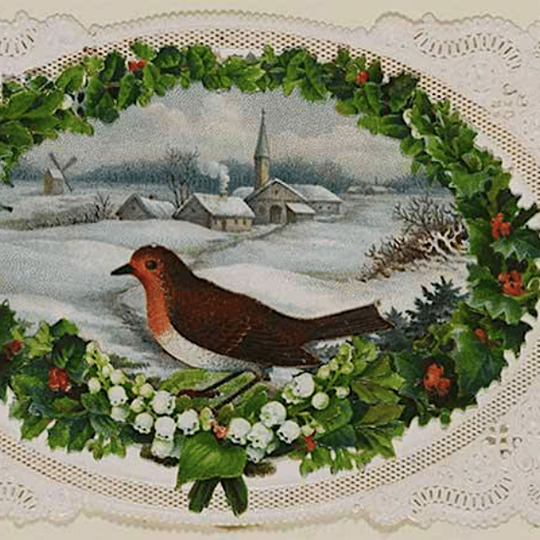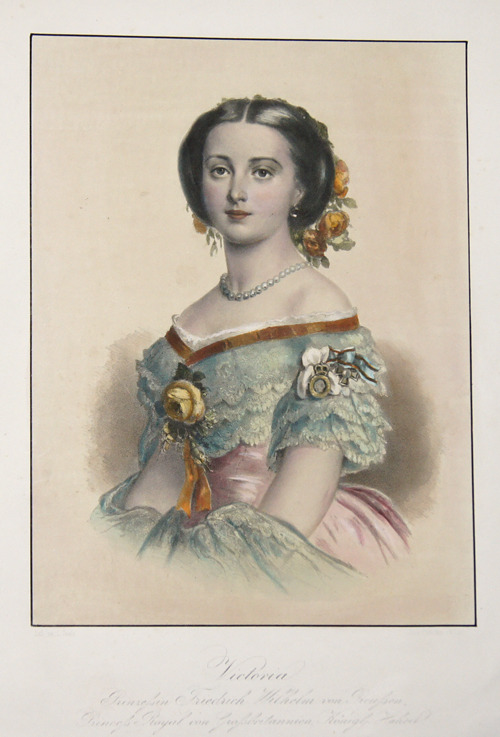#victorianera
Explore tagged Tumblr posts
Text

Paris, 1890
#reddit#hooverpaul#victorianera#paris#france#1890#1800s#photography#1890s#unknown photographer#b&w#history
174 notes
·
View notes
Text

Mourning sun, by Lucas Garcete
#darkart#gothicart#victorianart#darkromanticism#gothicaesthetic#victoriangothic#darkfantasy#macabreart#gothicculture#victorianera#darkarts#gothicdesign#victorianstyle#darkillustration#gothicarchitecture#victorianfashion#gothicfantasy#darkmood#victorianbeauty#gothicvibes#darkcreativity#victoriangoth#gothicartwork#darkvisuals#victorianmood#gothiccharm#darkartwork#lucasgarcete#artists on tumblr#photographers on tumblr
152 notes
·
View notes
Text

James Jacques Joseph Tissot, Triumph of the Will - The Challenge (detail), ca. 1877
#JamesTissot#GrosvenorGallery#VictorianArt#19thCenturyArt#AllegoricalArt#ArtHistory#FineArt#Symbolism#HistoricalArt#WomenInArt#JoanOfArc#ArtExhibition#PreRaphaelite#EdwardBurneJones#JamesWhistler#ArtisticSymbolism#VictorianEra#FemaleHeroine#ClassicalArt#leopard#details in art#detail#femmefatale#snakes#snake
350 notes
·
View notes
Text

Art Nouveau, Bathhouses, and Winter Gardens Art, Body, and the Beginnings of LGBTQ+ Liberalization The Art Nouveau movement, also known as Jugendstil, developed between 1890 and 1910 as a reaction to industrial materialism and the often strict, puritanical morality of the Victorian era. Art Nouveau celebrated nature, the aesthetics of the human body, as well as the expression of emotions and individuality through organic forms, flowing lines, and floral motifs. This movement, which manifested in architecture, design, painting, and sculpture, played a crucial role in questioning and dissolving outdated societal norms. Although Art Nouveau as an independent art movement ended in the 1920s, its stylistic elements and ideas continued to influence architecture and design in the decades that followed.
The Victorian era (1837-1901) was characterized by strict morality, rigid gender roles, and a conservative view of sexuality. The body was often regarded as something shameful, and sexual openness or the recognition of LGBTQ+ relationships were socially taboo and even criminalized. Art Nouveau broke with these restrictive norms. The movement emphasized the beauty and sensuality of the human body without moral judgment. Artists such as Gustav Klimt, Aubrey Beardsley, and Alfons Mucha created works that celebrated sexuality, intimacy, and the human body in ways far removed from Victorian prudery. This opened up new ways of thinking about the body, sensuality, and human connections.
In parallel with the Art Nouveau movement, luxurious bathhouses and winter gardens emerged across Europe. These spaces not only served as places for relaxation and retreat from hectic urban life but also became symbols of the interplay between nature, the body, and art. Art Nouveau bathhouses were exquisitely designed, often lavishly decorated venues where architecture, art, and the human body harmoniously merged.
Winter gardens, originally found in the homes of the wealthy upper class, were often glass oases where nature was artfully integrated into urban spaces. These spaces offered refuge from the outside world and became places of self-discovery, contemplation, and sometimes expressions of non-conforming sexual orientations.
In this era, bathhouses and similar venues often existed on the fringes of societal norms and began to take on special significance for the emerging LGBTQ+ subculture. Bathhouses, particularly in major cities like Paris, Berlin, and Vienna, became meeting places for people who sought to explore their sexual orientation in a time when homosexuality was often still suppressed or criminalized.
Bathing itself, long symbolically associated with purity and cleansing, transformed in the context of Art Nouveau into a symbol of liberation from restrictive norms. The corporeality openly displayed in these spaces provided LGBTQ+ individuals with an opportunity to meet outside the rigid societal rules and explore their identity.
The Art Nouveau movement and its associated new openness toward the body and sensuality offered artists and intellectuals a platform to advocate for the rights of individuals who deviated from the conservative norms of the time. Writers like Oscar Wilde and Magnus Hirschfeld fought for the decriminalization of homosexuality and laid the groundwork for the later liberation movements of the LGBTQ+ community.
The Art Nouveau era marked a turning point in Western culture and society. It was not only a celebration of art and nature but also an era of upheaval and emancipation from strict moral norms. Bathhouses and winter gardens became places of retreat, freedom, and intimacy, especially for those who did not fit into the rigid corset of Victorian society. The Art Nouveau movement and its associated aesthetics paved the way for new perspectives on the human body, sexuality, and the acceptance of LGBTQ+ individuals in a society that was slowly but steadily changing.
Text supported by GPT-4o and Claude 3.5 Sonnet
Image generated with SD1.5. Overworked with inpainting (SD1.5/SDXL) and composing.
#ArtNouveau#Jugendstil#LGBTQHistory#QueerArt#VictorianEra#Bathhouses#WinterGardens#BodyPositivity#LGBT#Liberation#QueerCulture#gayart#queer
20 notes
·
View notes
Text

Paris IXème arr.. Terrasse du café de la Paix. Vers 1900
#victorianchap#vintage#goodolddays#retro#oldphoto#victorian#paris#edwardian#fashion#history#streetscene#nostalgia#1900s#victorianera#Terrasse#café de la Paix
14 notes
·
View notes
Text

Crown Princess Victoria of Prussia with her son Waldemar
from Schloss Fasanerie IG
64 notes
·
View notes
Photo

Victorian Christmas Cards
Printed Christmas cards became popular in the Victorian period (1837-1901) thanks to a combination of cheaper printing techniques and even cheaper post, with the arrival of the Penny Black postage stamp. Coming in all shapes, sizes, and materials, Christmas cards were sent in their millions to all corners of the British Empire. Victorian illustrators created an entire mythology of exactly what we imagine a European Christmas should look like with their now-classic scenes of present-covered Christmas trees, holly, robins, sleighs, and snow-covered country lanes. When we dream of a white Christmas, it is the festive cards of the 19th century which are largely responsible for that evergreen imagery.
Continue reading...
46 notes
·
View notes
Text
Going to start referring to checking my email as "seeing to my correspondence" and see if that helps.
48 notes
·
View notes
Text


Steampunk Inventor at Work.
3 notes
·
View notes
Text

Steampunk Mandala 👉 📺 Motion Graphic Animation Video - Colorful Visuals 📌
#steampunkutopia#steampunkart#victoriangears#clockworkart#airshipmandala#mechanicalmandala#vintagemandala#industrialmandala#gears#cogwork#brass#rusty#antiquated#intricate#ornate#mechanicalsculpture#victorianera#airships#zeppelins#gothicmandala#darkmandala#industrialchic#victoriangothe#alchemy#madmachines#mandala#mandalaart#mandalapassion#gothic#victorian
5 notes
·
View notes
Text

Double staircase model with double revolutions and banisters made of cherry wood, c. 1850-1900.
#reddit#chubachus#victorianera#in New York City#ir#staircase#stairway#banisters#double staircase model#double revolutions#cherry wood#1850-1900#1800s#1900
6 notes
·
View notes
Text

The passion of lightning, by Lucas Garcete
#darkart#gothicart#victorianart#darkromanticism#gothicaesthetic#victoriangothic#darkfantasy#macabreart#gothicculture#victorianera#darkarts#gothicdesign#victorianstyle#darkillustration#gothicarchitecture#victorianfashion#gothicfantasy#darkmood#victorianbeauty#gothicvibes#darkcreativity#victoriangoth#gothicartwork#darkvisuals#victorianmood#gothiccharm#darkartwork#lucasgarcete#artists on tumblr#photographers on tumblr
164 notes
·
View notes
Text


#redbubble#hoodie#victorianera#skeleton art#autism#graphic design#zodiac#astrology#humor#dark humor#fashion#sweatshirt#stickers#tshirt#affordable#im so broke#please help
2 notes
·
View notes
Text
Miss Underwood's pig collection
By Jonathan Monfiletto

The L. Caroline Underwood Museum is named for the woman – whose given first name was Lucy, though she always went by her middle name of Caroline – who was a prominent, lifelong citizen of Yates County and a distinguished, longtime teacher in the Penn Yan school district. While she taught for nearly 50 years – reaching the mandatory retirement of 70 years old – and served as a substitute teacher for another year or two after that, Caroline had a vision to turn her home into a museum.
The Underwood Museum, of course, is not that home; throughout most of her adult life, Caroline lived in a home at 425 Liberty St. in the vicinity of the Yates County Courthouse. In the late 1990s, toward the end of Caroline’s life, when Yates County decided to expand its courthouse complex and construct an office building, the county gave Caroline the choice of selling her home to the county or forfeiting it through eminent domain. She did agree to sell her home to the county with the stipulation she could live in it until she died, which she did in December 1998 a week shy of turning 96.
Through Caroline’s bequest, the Yates County History Center established the Underwood Museum in the home at 107 Chapel St. to bring her vision to fruition and acquired her collections and belongings, which are on permanent exhibit on the second floor of the home. Being an only child and never having married nor had children, Caroline inherited many items through her parents, acquired possessions of her own, and purchased souvenirs on her travels across the country and around the world as well as at yard sales and estate sales.
Though Caroline Underwood is not a household name, even among the local history of Yates County and the Finger Lakes, her collections fascinate me. Particularly, there is a display case on the second floor of the Underwood Museum that houses souvenirs Caroline purchased on her many vacations. Having several of her travel journals in our collection, we at the Yates County History Center can match up many of the items in this display case to the several trips Caroline documented.
Still, one section of this display case has mystified me for the two and a half years I have worked at the History Center. That is Caroline’s ceramic or porcelain – it’s described as both in our collections database – pig collection. It stands out prominently on one of the lower shelves of the display case and typically draws visitors’ attention more than anything else in the exhibit. But I haven’t known as much about this part of Caroline’s collections as I would have liked to, and I still don’t.
Did Caroline acquire this collection for herself, or did someone purchase it for her? The 59 pieces all seem to be part of a related collection, but did other people – perhaps students – give her pieces of the collection at separate times? Why did Caroline like pigs so much? Did she even like pigs that much (I have a weird theory to go with this regard)?
Until now, the most I had known about Caroline’s pig collection came from former Yates County Sheriff Ronald Spike, whose father, George, was the sheriff before him at a time when the sheriff had quarters inside the county jail. Ron lived with his parents inside the jail on Liberty Street, near Caroline’s home. In his youth, Ron apparently struggled in school and needed extra help, so he would go to Caroline’s home after school for tutoring. Afterward, so the anecdote goes, he would tell his friends about seeing Miss Underwood’s pig collection and how the teacher told him not to touch it.
Recently, though, through a couple of visitors to the exhibit, I learned this collection may be examples of what are called fairing pigs, or fairings for short. Fairings were small porcelain or ceramic – again, the articles I found in my research describes them both ways – trinkets given away as prizes at fairs (hence the name) or sold for just a few pennies each. They were generally produced during the Victorian era, from 1840 to 1900, and they were German in origin – Germans believing pigs are a sign of good fortune or luck.
The figurines were usually 2 to 3 inches in height or width at a maximum, according to an article from the Polohouse. “Some where (sic) match holders with a match strike area, some were small banks, vases, or lidded boxes,” the article states. “And others were sweet little figural pieces without a purpose – many with a humorous inscription.” Indeed, one of Caroline’s figures features a mother pig peering into a cradle perhaps, with three piglets pictured on its side with the phrase “Triplets, O fancy.” Another of her figurines depicts a mother pig wearing an apron with a bell at her eye level and is labeled “The Dinner Bell,” as she calls her piglets to the table. Yet another of Caroline’s pigs, which is also pictured in the Polohouse article, shows a mother pig leaning over her piglet’s crib; the side of the pig reads: “Hush a bye baby, don’t you cry, you’ll be a sausage by and bye.”
An article from the Treasures in Your Attic column adds that fairings functioned as small dresser boxes, toothpick holders, chamber sticks, match holders, and ashtrays as well as small figures riding in early automobiles, playing piano, posed beside a bean pot, sitting on a sofa, or mailing a letter. Polohouse describes fairings as being painted with the same green paint and the same peachy pink paint for the pigs, along with metallic gold and deep orange-red and other colors. While Caroline’s pigs aren’t identified in our collections database as fairings, they certainly fit the bill with these color schemes on the figurines in her collection.
Based upon the evidence in these articles and a few others I consulted in my research, I am almost certain (I feel like I cannot be fully certain without documentation) that Caroline’s pig collection is indeed a set of fairings. Now, my next is where and how did she acquire this collection or from whom did she receive these pieces?
Since the pieces were made between 1840 and 1900, perhaps her parents acquired them and passed them down to her. Since the pieces are German in origin, maybe Caroline purchased them on one or more of several trips overseas to Europe. Since the pieces are collectible trinkets, it’s possible Caroline found them at one or more of the many yard sales and estate sales she is said to have visited.
#historyblog#history#museum#archives#american history#us history#local history#newyork#yatescounty#pennyan#europeanhistory#europe#germany#fairingpigs#fairing#collectibles#carolineunderwood#victorianera#treasure
3 notes
·
View notes
Text

"🎩🐍 Step into the foggy streets of 19th century London with my latest #HazbinHotel fan fiction! Uncover the thrilling life of Sir Pentious before the afterlife. Are you ready to witness his notorious escapades? Dive in now! Art by marikal199 ����
#SirPentious#HazbinHotel#FanFiction#19thCenturyLondon#HistoricalFic#FanficFriday#VictorianEra#DarkFantasy#FanCreativity
2 notes
·
View notes
Text

Victoria, Princess Royal
#princess#princesses#victorianera#19thcentury#royalty#crinolinedress#crinoline#1860s#victorian#royals
27 notes
·
View notes